Recollections of the Past 30 years pursuing Coelacanths
Jerome Hamlin, creator dinofish.com
When Malasia Airlines Flight 370 disappeared in 2014 on a routine flight from Kuala Lumpur to Bejing, there was an extensive search that eventually focused on the southern Indian Ocean. Debris was eventually discovered at Reunion Island and on the coast of Mozambique, East Africa. The explanaition was the strong counterclockwise current circulating within the Indian Ocean known as the Indian Ocean Gyre. This curent sweeeps up past the western end of Indonesia, then heads west across the southern tip of India, and finally southwest down the eastern coast of Africa, including Mozambique, the Comoros, Madagascar, Reunion and so on. One of the likely accounts of the migration of coelacanth populations, has them originating in the southern Phillippines, and Indonesia then individuals getting caught up in the gyre and swept with it, possibly seeding colonies along the way until they end up along the African East coast.
The Andaman and Nicobar islands belong to India politically, but lie not far from Indonesia's western tip. They are remote, and if coelacanths did live off them there is a good chance they would not have been identified as what they were by local fishermen. So that became the plan for a trip/expedition we launched in 2017.
To reach the Andaman and Nicobar Islands from New York, we first made the tiring circumpolar flight to Delhi- right over the North Pole, but at night, so you see nothing. The flight is full of Indians for whom it has become a shuttle service, for both business and family interactions. Using my Lonely Planet, guide I crossed the street from our hotel in Delhi (by now we were doing hotel bookings online), to a raildroad booking agency. We had to reach Kochi in the south as a starting point, and I thought a first class train ride down the scenic coastal route via Mumbai would be a refreshing start to what might turn into a difficult undertaking. I was amazed by the low fare for two people on a two day trip with a private airconditioned bedroom. Just a hundred $US each!. Well I thought this is India.
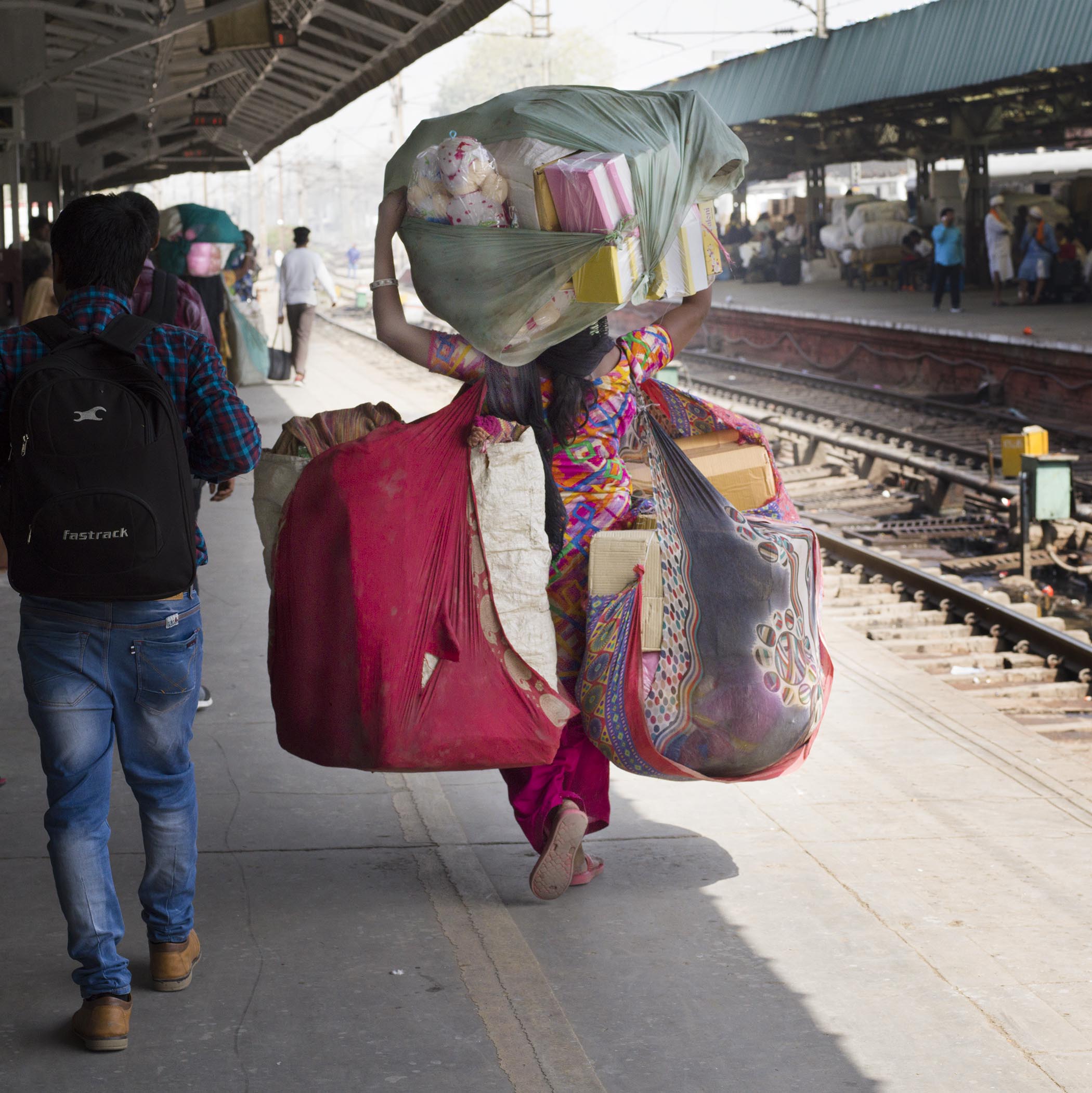
Loaded Platform Vendor at the New Delhi station
I was wrong. I had unknowingly booked us on the ccneter of the continent daily milk run down through an industrial wasteland where stops included Bohpal, site of one of the greatest industrial accidents of all time, nuke plants, and fields of scrap and waste heaps. Instead of a private bedroom we shared our space with families getting on and off in the midde of the night. But if you paid thousands, you could not have bought a better immersion into Indian life. The riders looked at us as curiosities on their train. We took it all in.
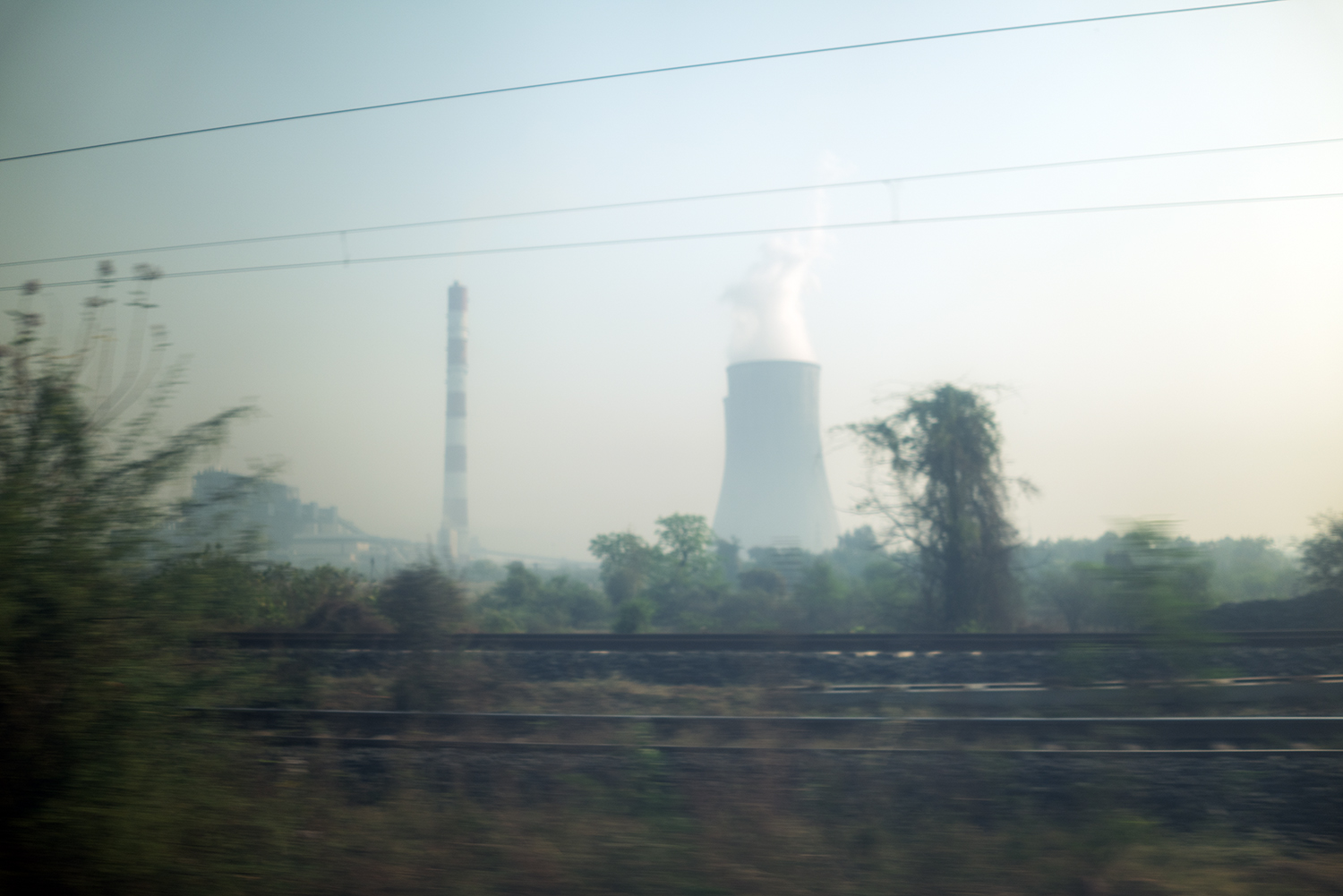
Scenic views from the Kerala Express
At Kochi guides and drivers got us going right away with our fish I.D. scans and interviews. We went to the fishing areas, and even visited the regional director of fisheries. This continued right down to the southern tip of India at Kanyakamari.
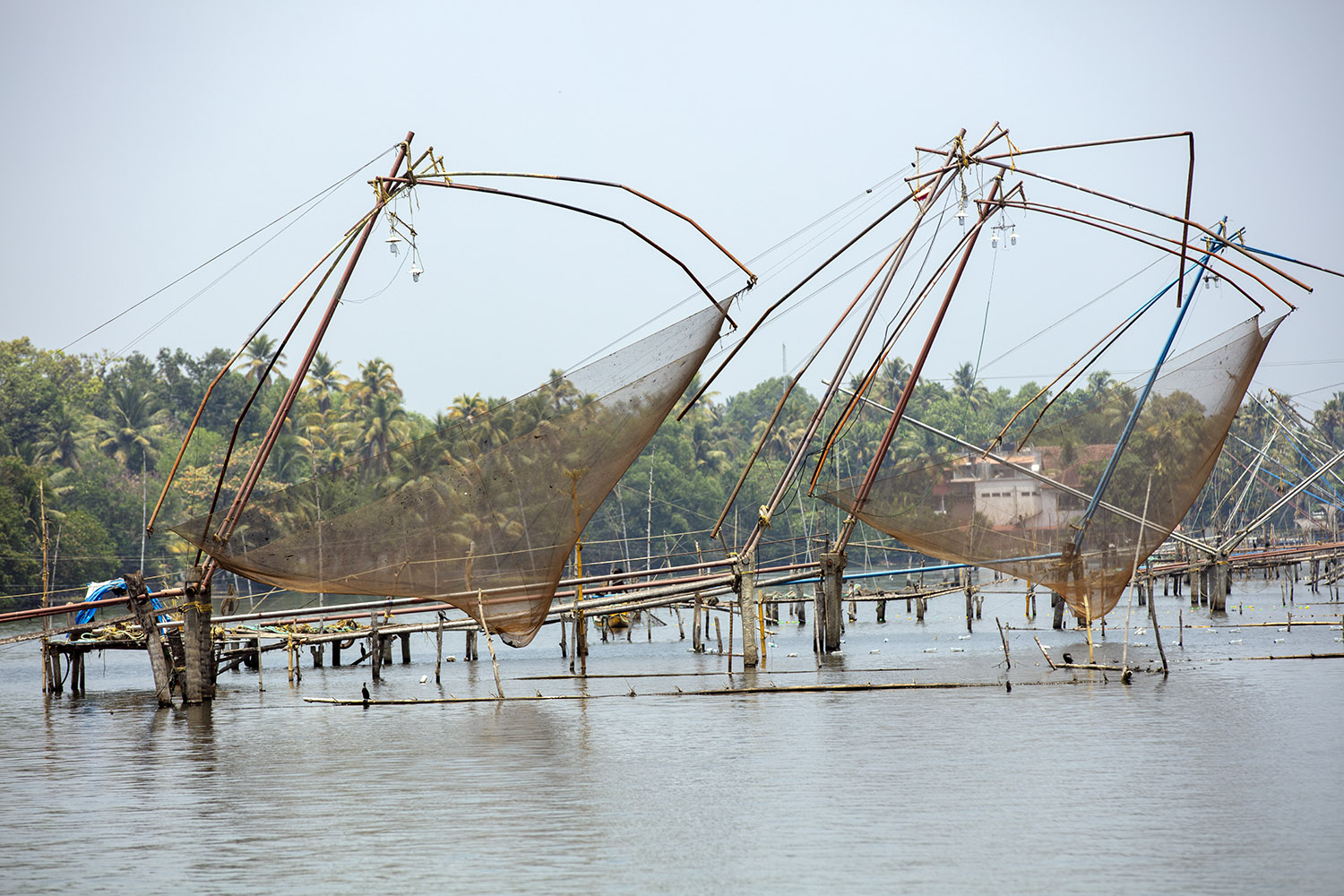
"Chinese Nets" at Cochi, are raised using stone counter weights.

Fishing Boats at Kochi.
 Kanyakumari at the Southern tip of India
Kanyakumari at the Southern tip of India
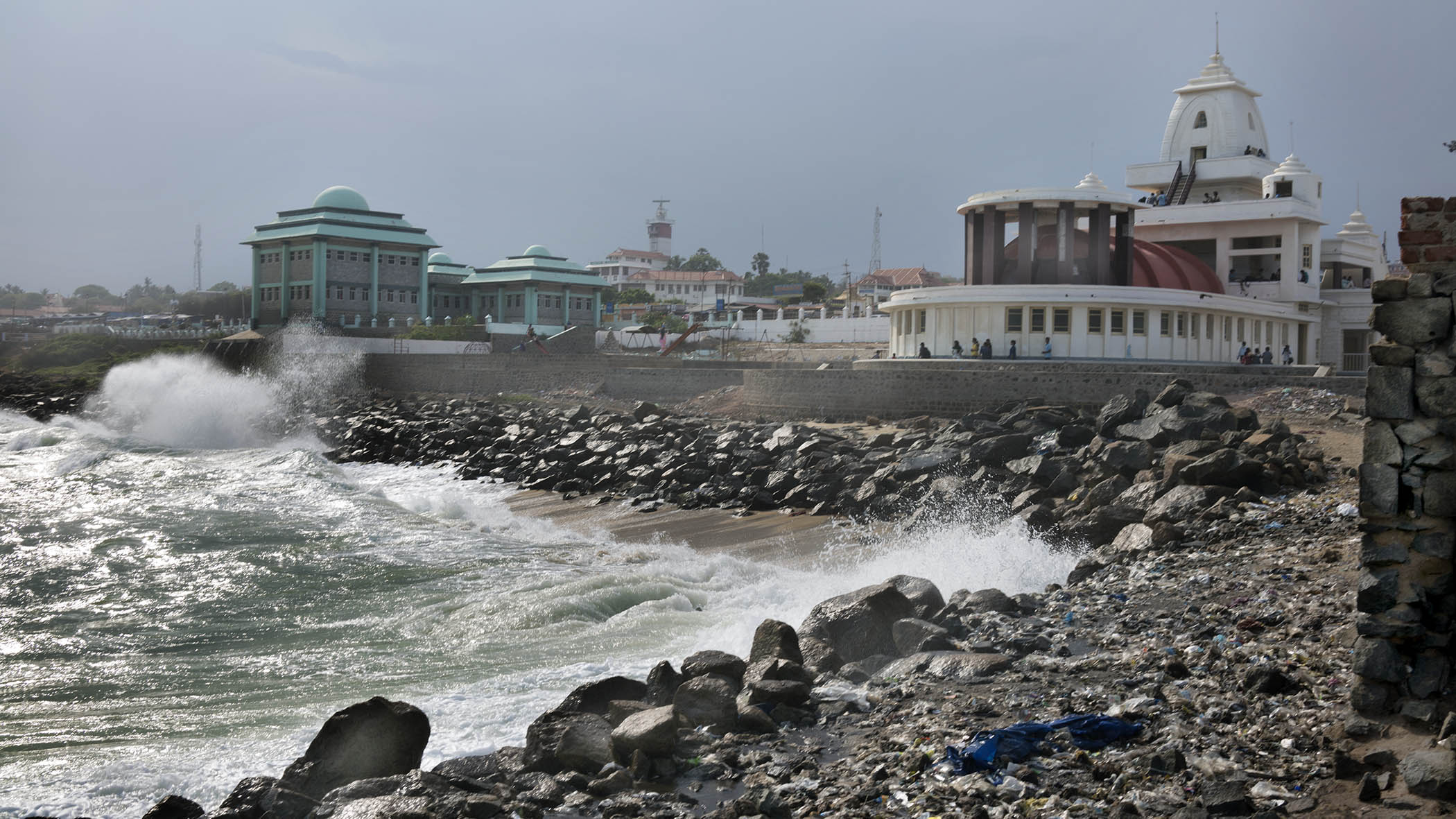
Here the meeting of three oceans can make for rough seas.
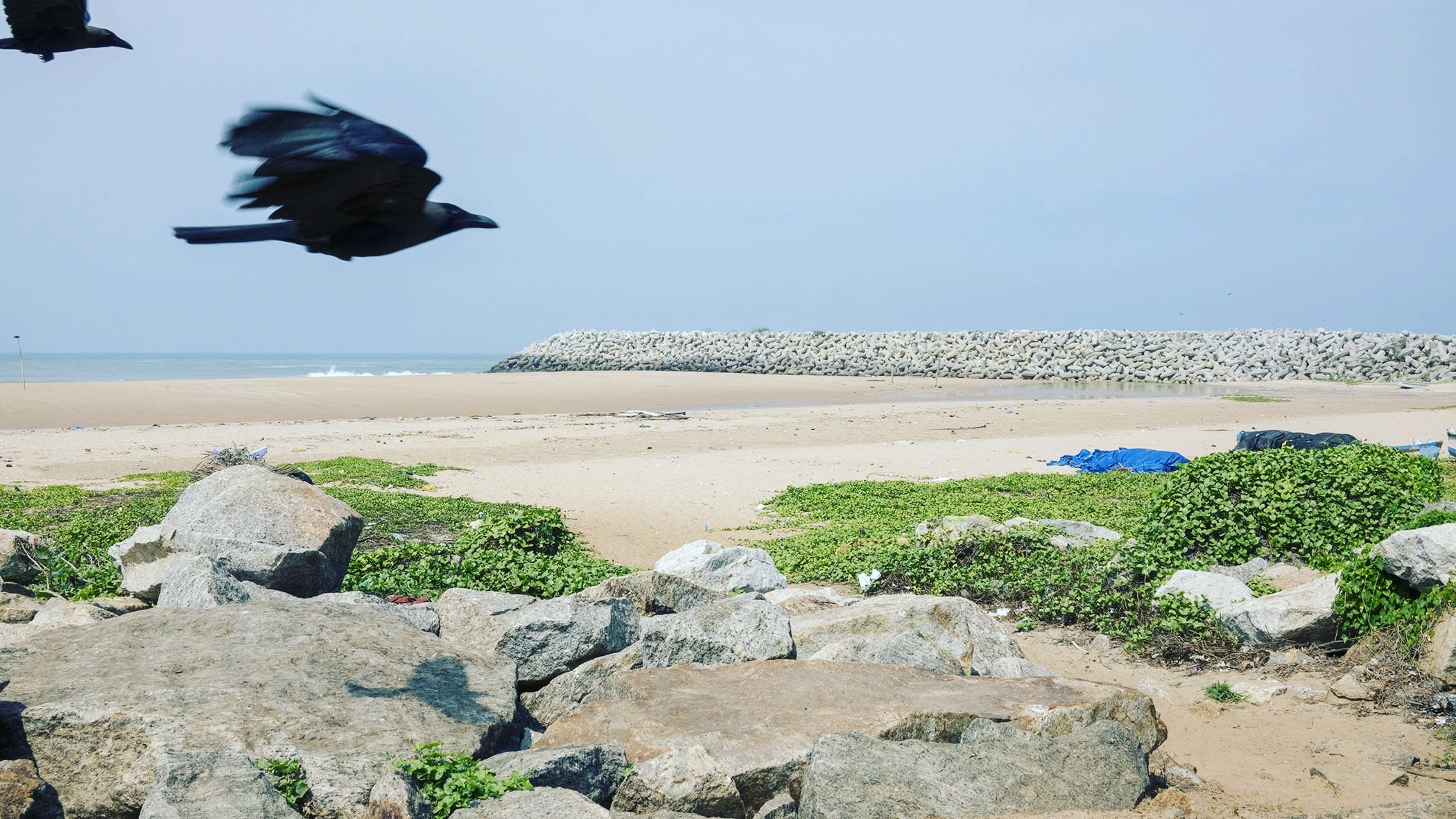
Beach near Kanyakumari where fishing boats are launched
We had no positive I.D's in South India. The flight to the Andaman and Nicobar Islands leaves from Chennai, formelry Madras, on the southeast coast of India. The trip across the eastern Indian Ocean to the Andamans next to Indonesia takes a few hours. It is full of Indian tourists on holiday! What's that about? It turns out the Andamans, a formal British penal colony, with their beaches and dive sites, have been developed as a tourist destination. (Think of North Americans flying to the Bahamas.)The Nicobars, to the south, however are restricted and off bounds except to the Indian Navy. A complicating problem for tourism is the existence of four distinct groups of aboriginal peoples still living in the Andamans, though in decimated numbers (The Great Andamanese- only a few left, The Onge, The Jarawa, and the Sentinelese) . The Indian Government seeks to protect these remnant indigenies by making them completely off bounds to tourists. If they are seen, they are not allowed to be photographed. The island of North Sentinel, whose inhabitants kill visitors, cannot by law be approached within three miles. (Not long after our visit to the Andamans, an American missionary was killed there during an uninvited visit.) On arrival visitors must fill out special forms maintained by immigration officials.
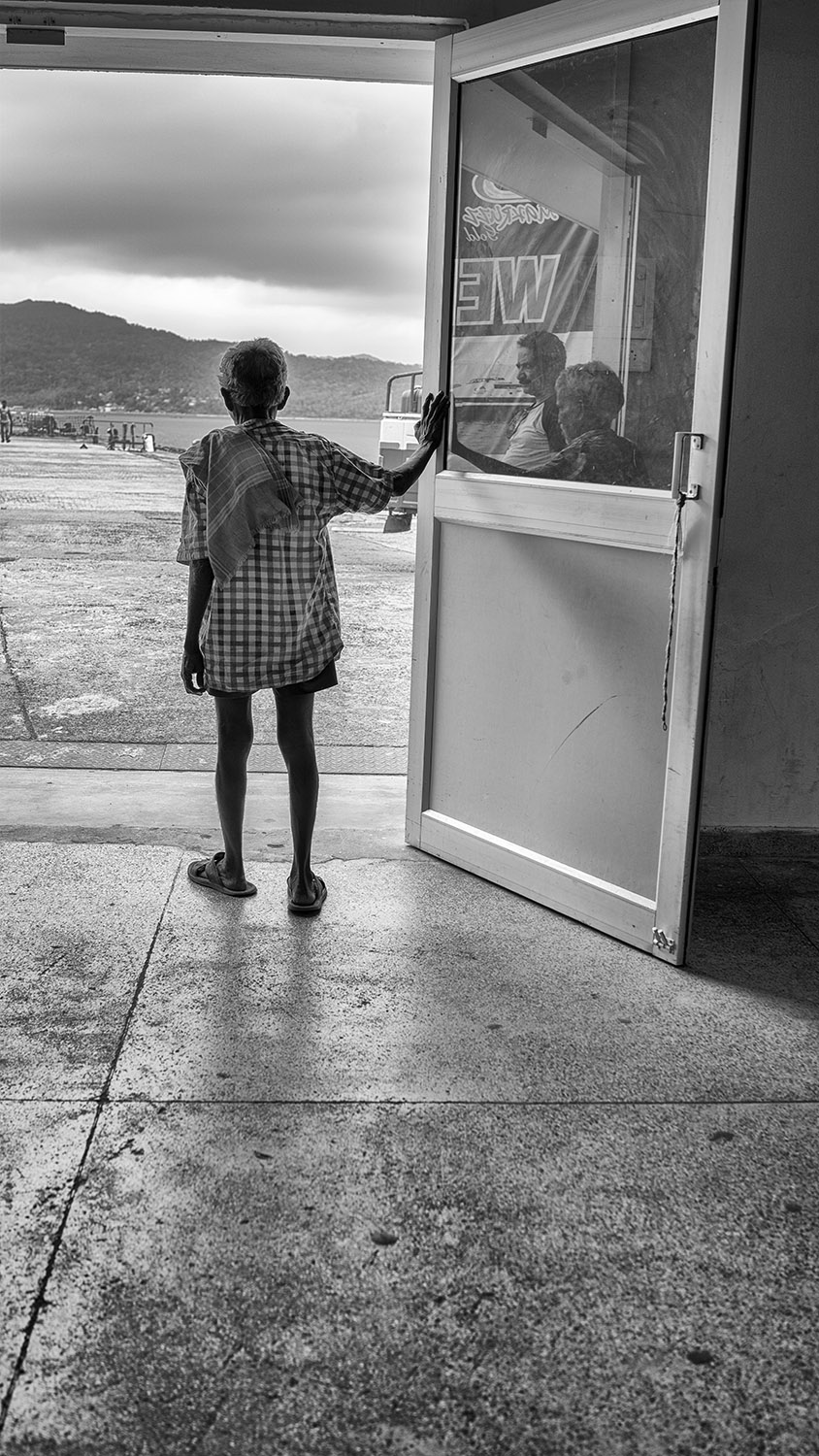
A Jarawa man living in Port Blair, working as a porter at the ferry terminal.
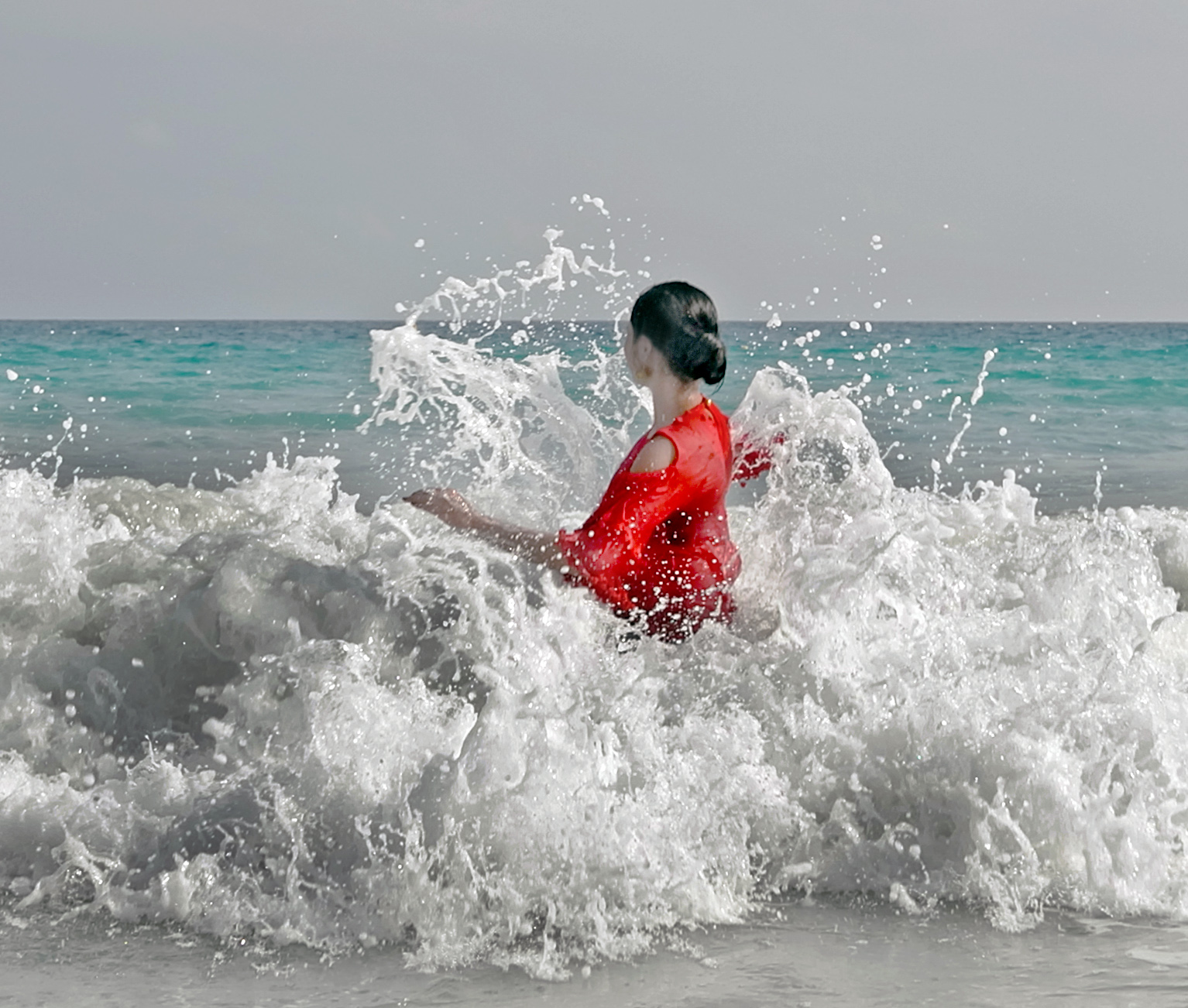
Holiday bather at an Andaman Beach
Nonetheless, we were able to carry out our fish surveys. From the capital town of Port Blair on South Andaman island, we joined a convoy, one of two a day, heading up the "trunk road" to the north tip of North Andaman Island. Convoys were needed as the road cut through the territory of the Jarawa Aborigenies on Midle Andaman Island. At first, contacts with the Jarwa had been allowed, but it was to the detriment of both visitors, where there had been fatalities commited by the tribesmen, and the Jarawa who became dependent on handouts along the road and exposed themselves to foreign diseases. Now there was no stopping and no photography allowed. A minder with a rifle climbed into the front seat of our vehicle. During the long ride on the bumpy dirt road, the rifle slung over his shoulder, pointed directly at my head. When I complained, he laughed and said it wasnt loaded. Diana saw a group of Jarawa at the roadside peering at the traffic. They wore T shirts and headband wreaths made from green leaves.

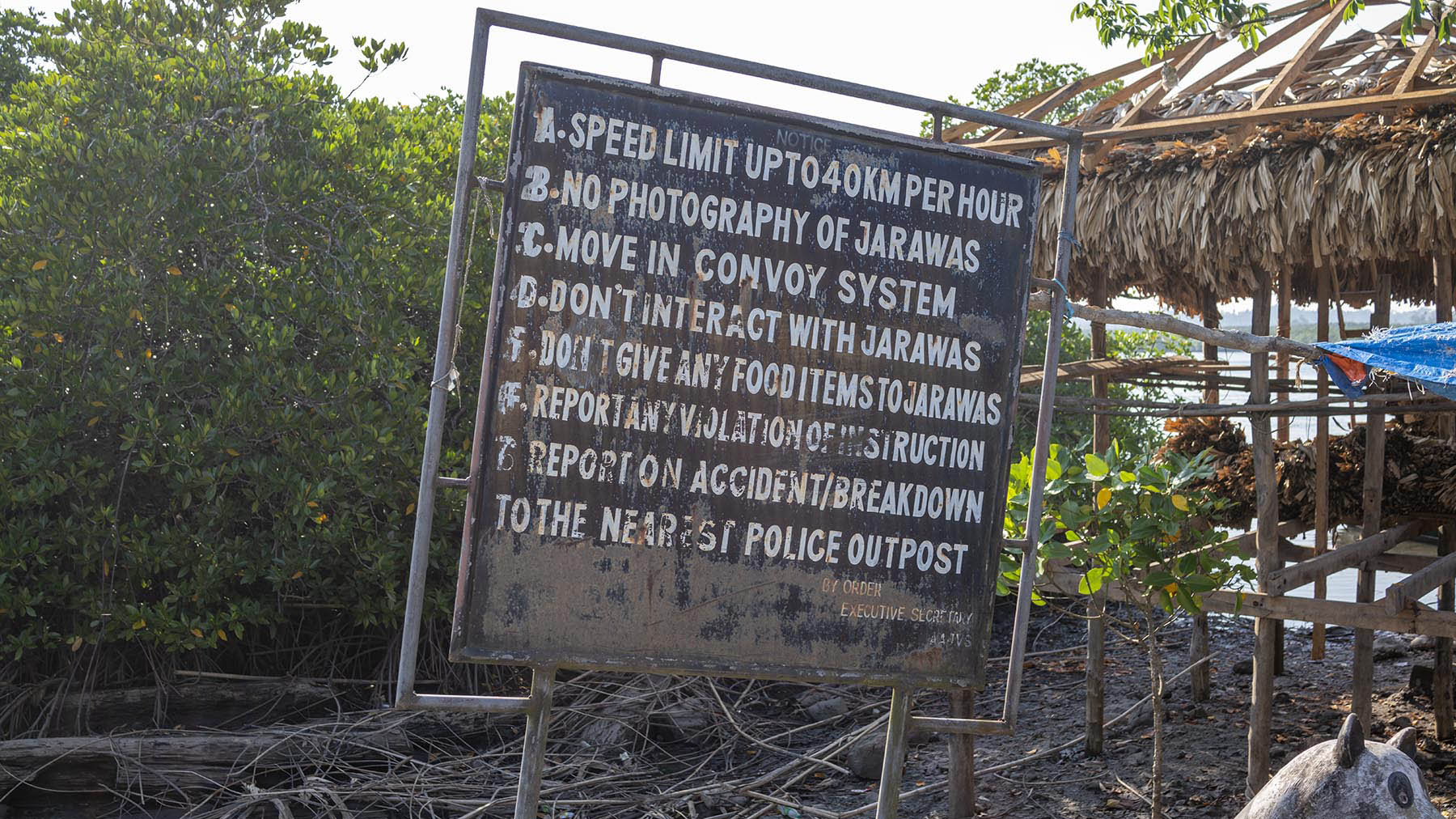
Instuructions for Travel on the Trunk Road

Ferry crossing on the Trunk Road from Middle to Upper Andaman
.jpg)
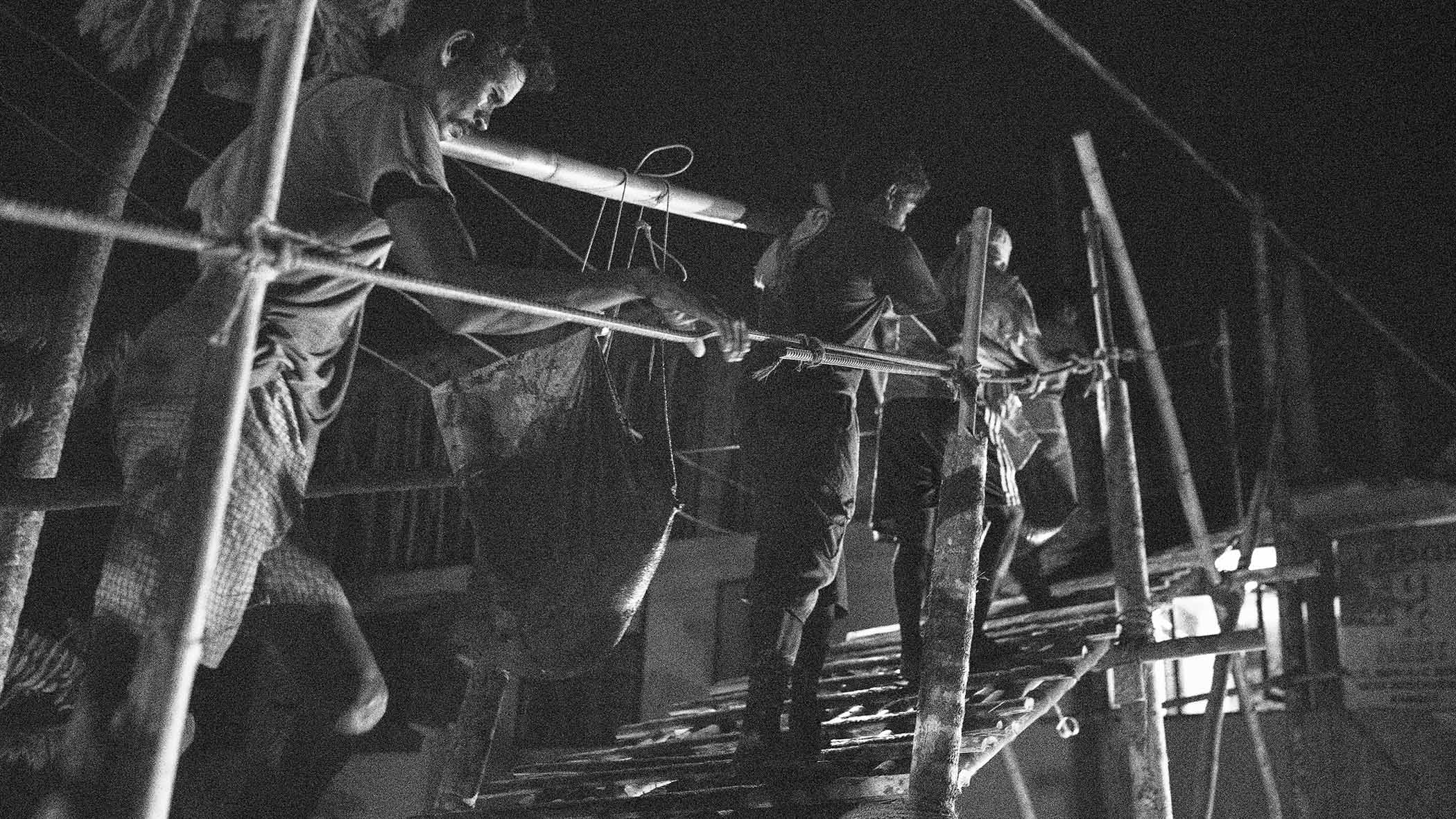
At the tip of North Andaman we found a beach resort on a protected turtle nesting beach. Again we asked about our fish of the owners and others who lived in the area, but they did not know it. If there were coelacanth colonies ringing the Indian Ocean, a quick survey of fishermen and fisheries officers in the areas we visited did not reveal them.
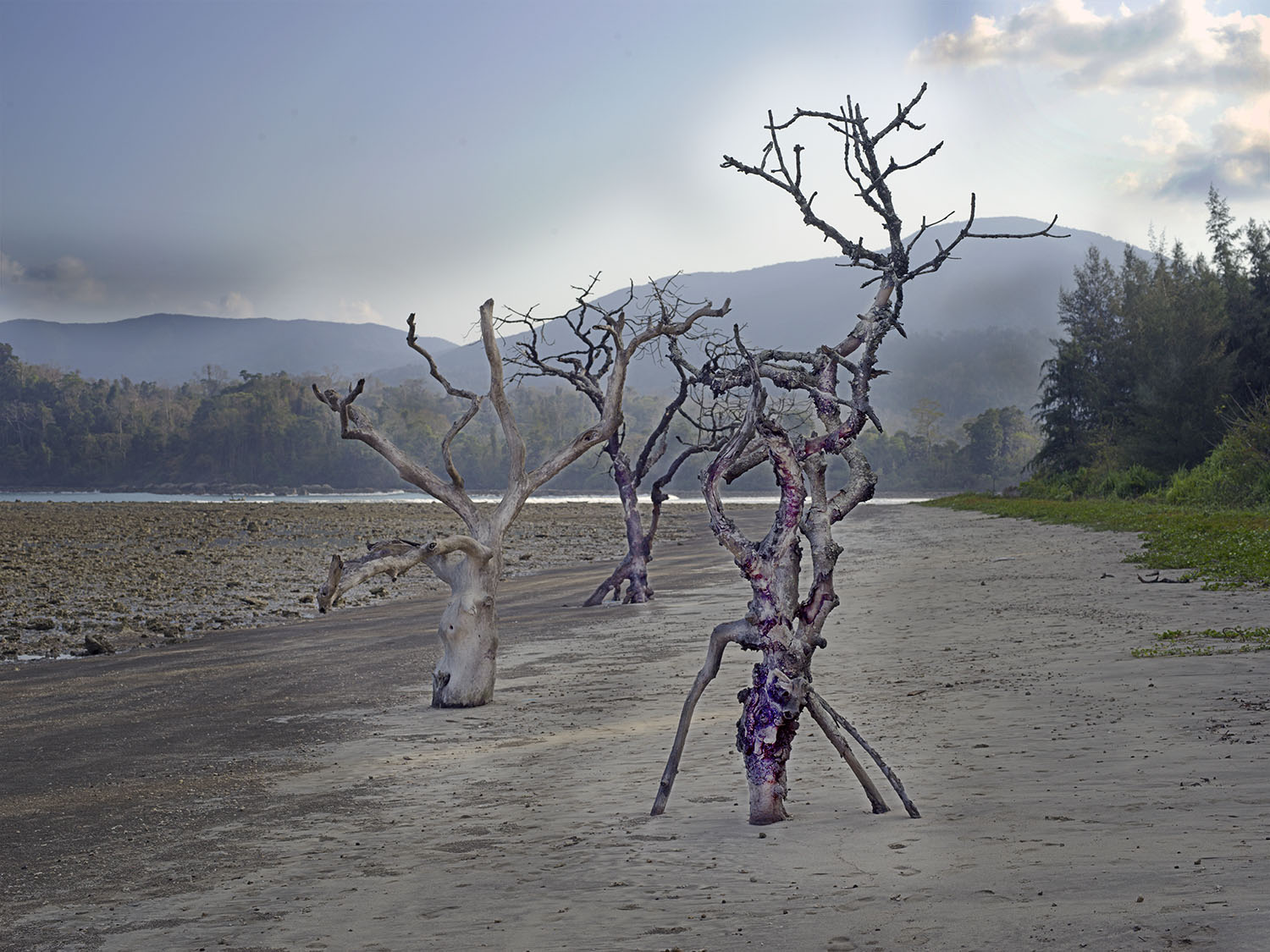
Mangrove skeletons on the nesting beach

Carved stone beach at the tip of North Andaman Island
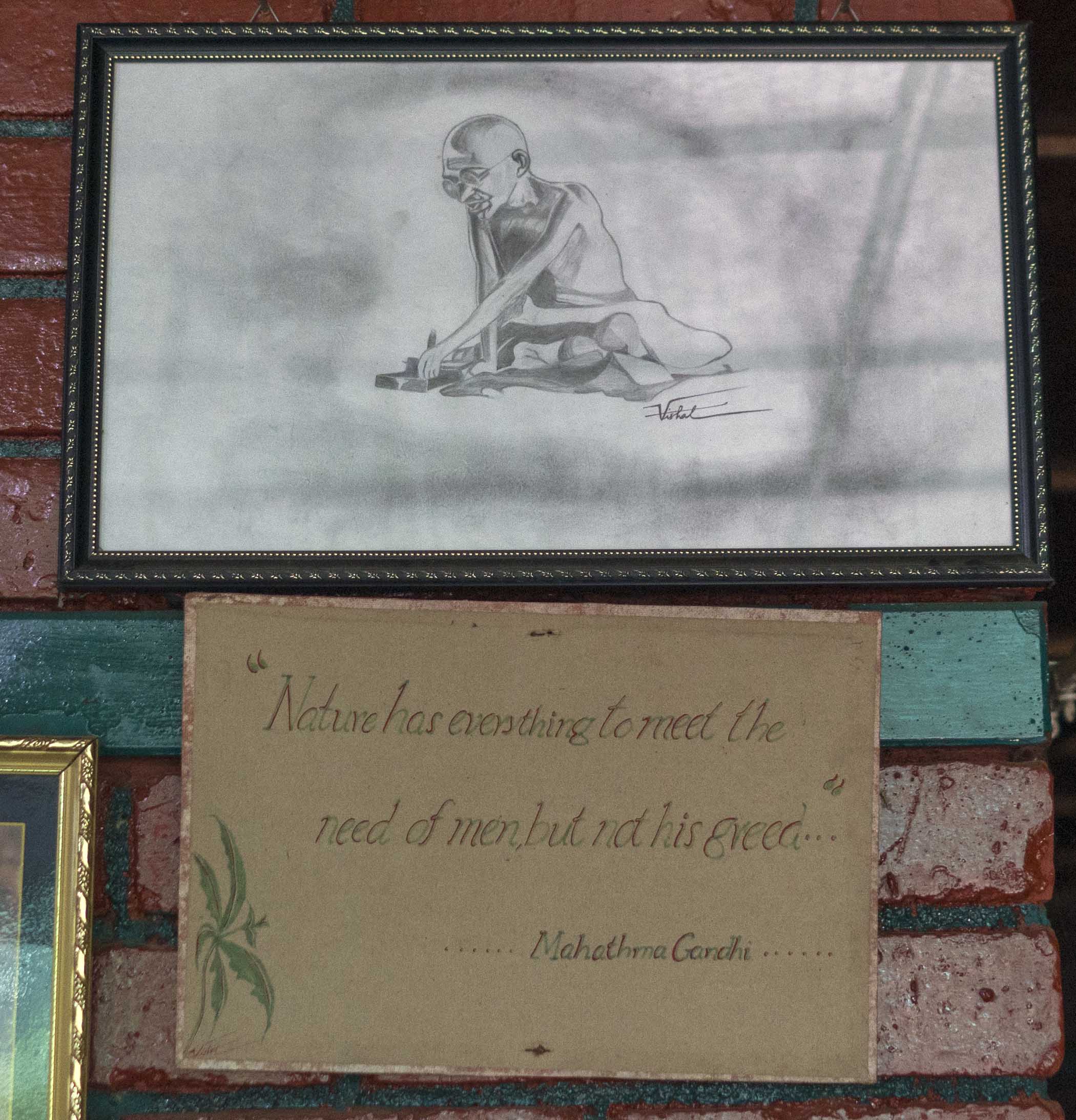
Gandhi as conservationist
